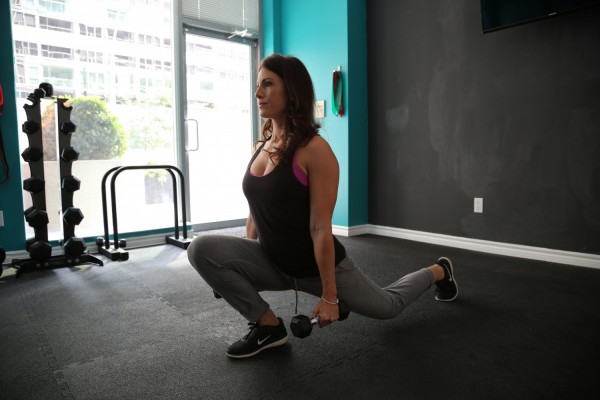4 Exercises to Help You Sleep Better
Are you having a hard time catching a good night's sleep? If you're sure that you are eating right not to disrupt your rest at night, you probably need some movements and exercises to improve sleep duration and quality.
A study Sleep Medicine journal published in June found a 37-percent increase in clinical insomnia rates among adult individuals in China from prior to the peak of this global health crisis.
Numerous studies have found exercise can lessen the time it takes to fall asleep, as well as the time spent awake during the night.
Moreover, this activity helps increase both sleep time and quality, as well. While sleep experts recommend avoiding strenuous exercise within one hour before bedtime, it increases heart rate and adrenaline, not to mention body temperature, meditative movement, and stretching like Yoga has been found to help enhance sleep quality.
ALSO READ: High Glucose Levels May Limit One's Capability to Do Aerobic Exercise

Studies have found exercise can lessen the time it takes to fall asleep, as well as the time spent awake during the night.
4 Must-Try Exercises for Better Sleep
Below are 4 of the best exercises you can try to achieve better sleep at night. For each of these movements, it is important to take it slow. More so, as you do so, do deep abdominal breaths emphasizing and elongating exhales.
1. Yoga
The relaxing poses and stretches of Yoga, and the calming breathing movements that go with them, maybe particularly helpful if stress is what's keeping a person from falling asleep.
If you have insomnia and practice Yoga every day for eight weeks, you are likely to fall asleep quicker and increase the amount of time you spend sleeping.
2. Do the Lunges
This exercise starts opening up at the deepest muscle in the core called the psoas muscle, connecting the spine to the legs.
This muscle will help you move forward when walking or running while supporting your organs and connecting to the diaphragm, directly affecting your breath. Experts say, relaxing the psoas will enable you to take deeper, diaphragmatic breaths.
DON'T MISS THIS: 6 Reasons Why You're Gaining Weight Unintentionally
3. Body Scan
If you haven't heard of this technique, engages scanning your body for indications of tension in order for you to overcome such signs and fall asleep.
To do a body scan, lie down in bed, and focus on relaxing while you exhale. Feel the beneath you. Feel how the bed is supporting you, as well, while you continue exhaling and relaxing.
Visualize every part of your body, beginning with your head and moving through your whole body to detect spots that feel the tension. As you move through your whole body, exhale and concentrate on relaxing your tense muscles.
When you're done looking for tension in your whole body, focus on your exhales. And, as you exhale, sleep experts say, "Repeat a mantra to yourself" to help you induce sleep. An example of a mantra is uttering the word "sleep," or another hint that will help you begin to drift off.
4. Stretch, the Figure-Four Way
In Yoga, this exercise is also called "supine pigeon." It opens up the hips, releases pressure in the lower back, and neutralizes poor posture and frequent sitting position.
To do this, lie on your back with bended knees and feet on the floor. As you do so, cross your right foot above your left thigh, just above your knee. Hold onto the back of your left thigh and gently pull both of your legs towards you.
Meanwhile, bend both of your feet, then keep your left foot higher or at knee height. Hold it from five to 10 breaths. Do the same on the other side.
IN CASE YOU MISSED IT: Is Excessive Exercise Linked to Eating Disorders? Here's What Studies Say
Check out more news and information on Exercise Routines on MD News Daily.
Oct 13, 2020 08:20 AM EDT





